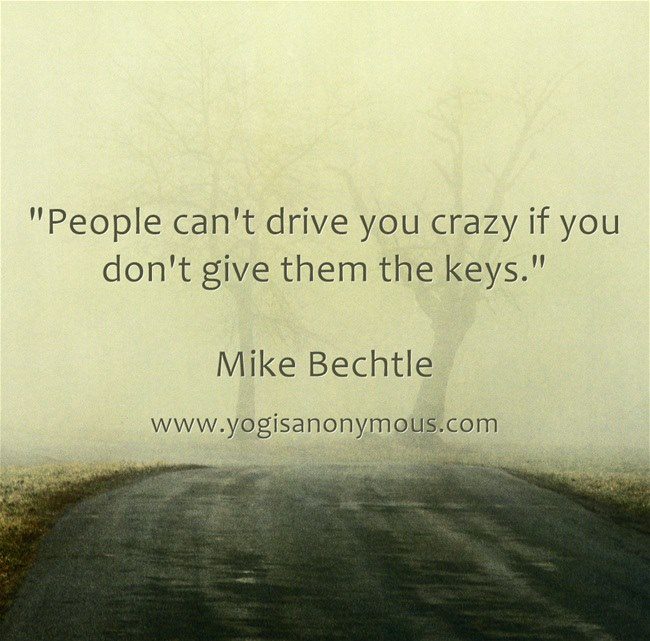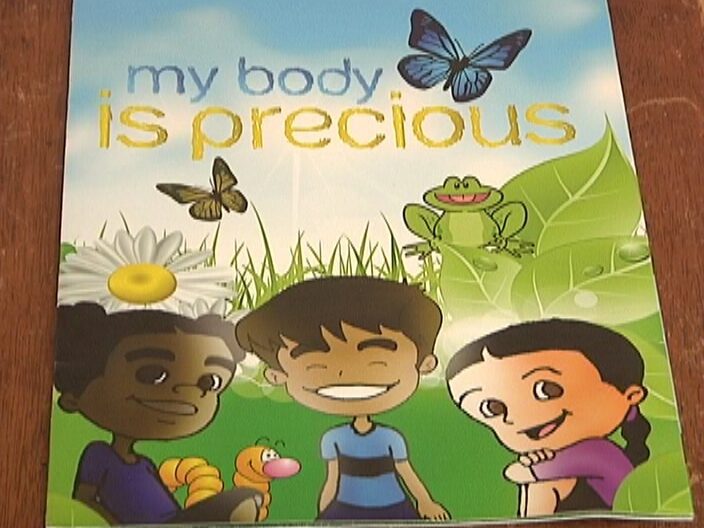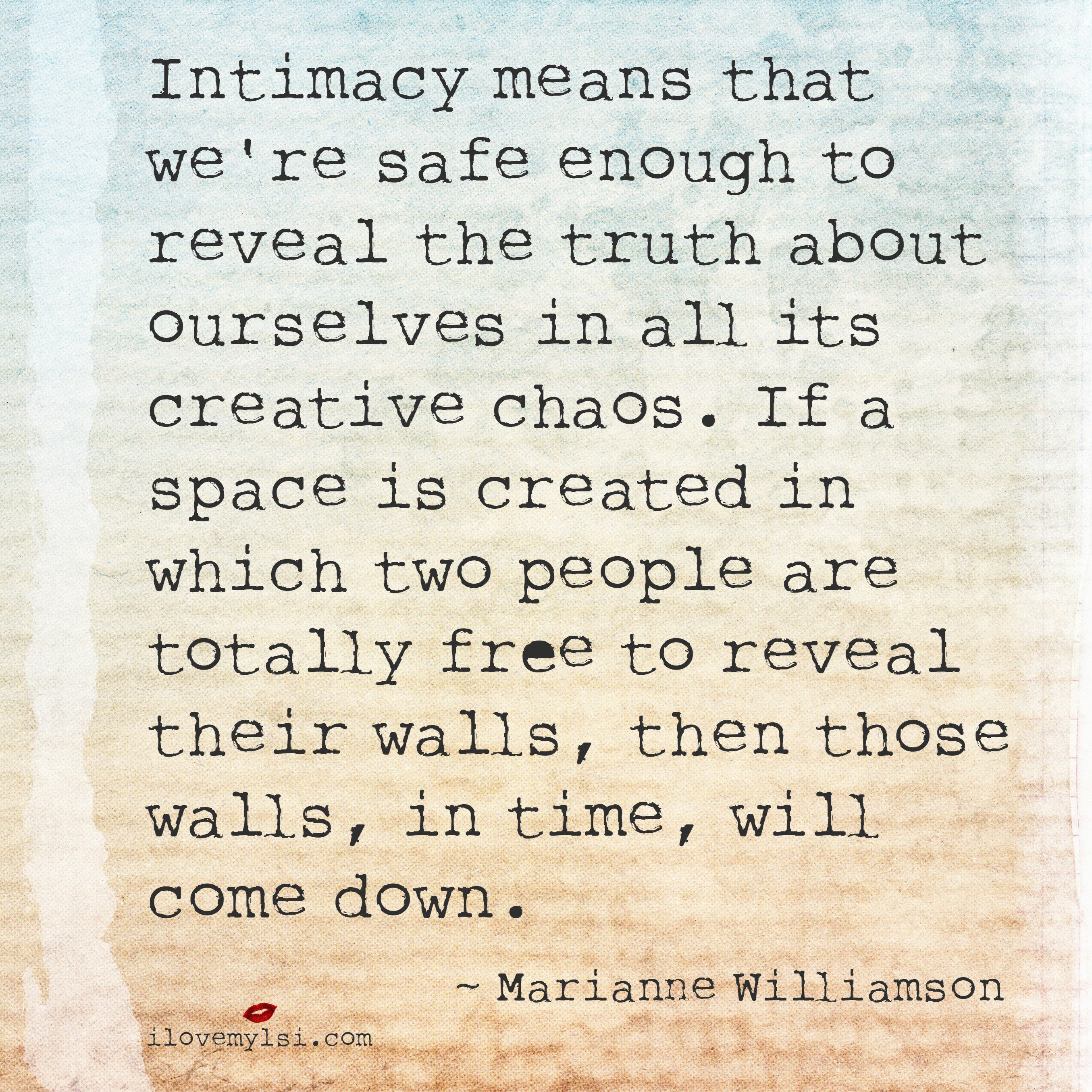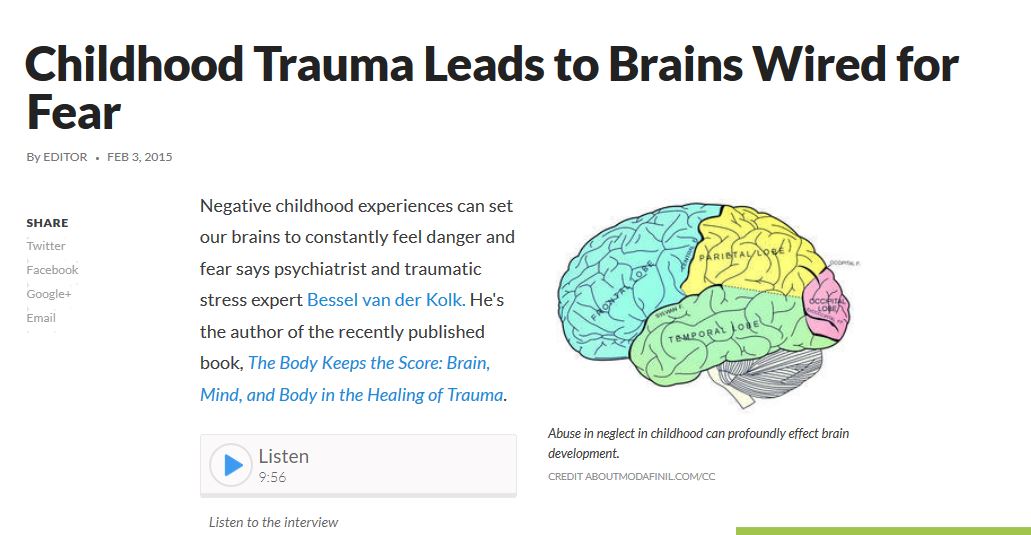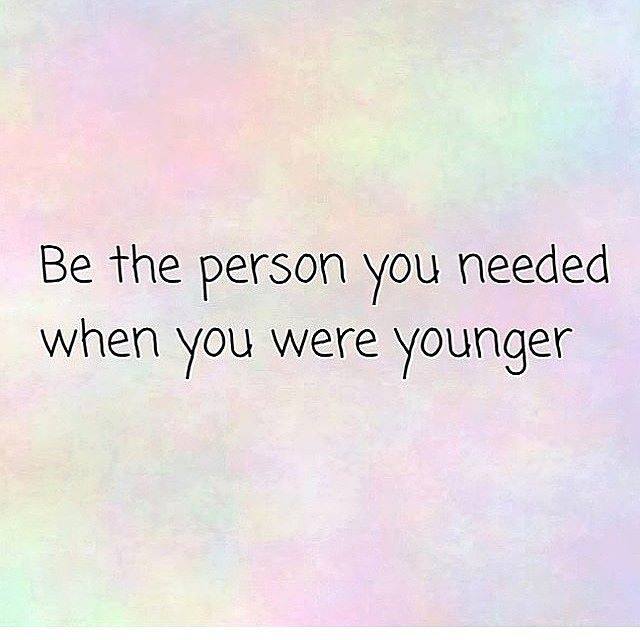In this short video Nadine Burke Harris explains how adverse childhood experiences impacts the health of the child and continues to do so over the lifetime of the person. She explains in scientific terms why this occurs and ways the impacts can be reduced. She believes that this is a public health issue and should be addressed as such with multidisciplinary teams available to help affected individuals to heal the trauma and reduce the impacts.
Tag: Adult Survivors of Child Abuse
Coping with loved ones with addiction or mental illness
The below is a wonderful post by Ally Hamilton explaining how to cope with a loved one who has addiction or mental illness. It is wise advice about not sacrificing your own life trying to rescue someone who does not want to help themselves. Thank you Ally x
People can only drive us crazy if we let them. A person can spin his or her web, but we don’t have to fly into the center of it to be stunned, stung, paralyzed and eaten. Remember that your time and your energy are the most precious gifts you have to offer anyone, and that includes those closest to you, and also total strangers. Your energy and your time are also finite, so it’s really important to be mindful about where you’re placing those gifts.
It’s hard not to get caught up when someone we love is suffering, or thrashing around, or in so much pain they don’t know what else to do but lash out. It’s hard not to take that to heart, or to defend yourself, or to try to make things better for them, but you’re not going to walk into a ring and calm a raging bull with your well-thought out dialogue. You’re just going to get kicked in the face, at best, and I use that analogy intentionally. People in pain–whether we’re talking about people with personality disorders or clinical depression, people suffering with addiction, or people who are going through mind-boggling loss–are dealing with deep and serious wounds. They didn’t wake up this way one morning. Whether it’s a chronic issue, or an acute and immediate situation, when you’re dealing with heightened emotions including rage, jealousy, or debilitating fear, you’re not going to help when a person is in the eye of the storm. If someone is irrational, trying to reason with them makes you as irrational as they are; you can’t negotiate with crazy. I’m not using the word as a dagger, I’m saying we’re all crazy sometimes, we’re all beyond reason sometimes. We all have days when we feel everyone is against us, whether that’s based in any kind of reality or not.
You can offer your love, your patience, your kindness and your compassion if someone you care for is suffering. You can try to get them the support they need. You can make them a meal, or show up and just be there to hold their hand, or take them to the window to let in a little light, but if someone is attacking you verbally or otherwise, we’re in a different territory. You are not here to be abused, mistreated, or disrespected. You are not here to defend yourself against someone’s need to make you the villain. You don’t have to give that stuff your energy, and I’d suggest that you don’t. It’s better spent in other places.
We can lose hours and days and weeks getting caught up in drama or someone else’s manipulation. That’s time we’ll never have back. Of course things happen in life; people do and say and want things that can be crushing sometimes, but the real story to examine is always the story of our participation. If someone needs you to be the bad guy, why do you keep trying to prove you’re actually wonderful? Are you wonderful? Brilliant, get back to it. If someone has a mental illness and they are incapable of controlling themselves, keeping their word, or treating you with respect, why do you keep accepting their invitation to rumble? You already know what’s going to happen. Don’t you have a better way to spend your afternoon? My point is, life is too short.
When a person is in the kind of pain that causes them to create pain around them, your job is to create boundaries if it’s someone you want to have in your life. You figure out how to live your life and honor your own well-being, and deal with the other party in a way that creates the least disharmony for you. That means you don’t get in the ring when they put their dukes up. You don’t allow yourself to get sucked in. Do you really think this is the time you’ll finally be heard or seen or understood? People who need to be angry cannot hear you. It doesn’t matter what you do or say, they have a construct they’ve built to support a story about their life that they can live with; it doesn’t have to be based in reality. Not everyone is searching for their own truth or their own peace; some people are clinging to their rage, because that feels easier or more comfortable, or because they really, truly aren’t ready to do anything else yet. You’re not going to solve that, but you can squander your time and energy trying. You can make yourself sick that way. I just don’t recommend it.
You really don’t have to allow other people to steal your peace, whether we’re talking about those closest to you, or people you don’t even know, like the guy who cuts you off on the freeway, or the woman talking loudly on her cellphone at the bank. You don’t have to let this stuff get under your skin and agitate you. You don’t have to let someone’s thoughtless comment or action rob you of a beautiful afternoon. Of course we give our time to people who need us. I’m just saying, don’t get caught up in the drama. Sending you love, Ally Hamilton
Insights into addiction – it is all about the pain
These are insightful videos by Gabor Mate who explains that emotional pain and trauma underlies addiction. He also explains how trauma/addictive tendencies get past on through the generations unintentionally when addiction affected parents are not able to be present and available to their kids.
Everything you think you know about addiction is wrong
I love this video by Johann Harri. In it he explains that the opposite of addiction isn’t sobriety, it is connection. We all need to feel connected to others, to belong, to be loved and accepted as we are. Without that we look for that connection in things or substances.
Childhood trauma leads to brains wired for fear
This is a great article posted on ‘Side Effects Public Media’ website explaining the impact of childhood trauma on a child’s developing brain.
How do we heal from child abuse?
A child who was neglected, beaten, belittled or raped as a child will have grown with high levels of fear in their body. They will have learned to always be on guard, to watch out for danger, to not trust anyone and be alone. They have learned to focus on survival at the expense of joy, friendship and love. A child abused does not know how to relax and be peaceful. They don’t know how to receive or give love as that doesn’t feel safe. They have shut off from the softer sides of life and hardened themselves to cope with all the pain, grief, loss, anger, shame and rage. They are a powder-keg of emotions that are held together by strong armouring and defense mechanisms designed to protect them from experiencing further hurt.
To heal from child abuse all this damage needs to be undone so light can enter and soothe the dark spaces within, so love can enter and melt the sadness away, so peace can enter and joy can flood their cells returning them to their natural state of being.
Healing is a long process of becoming aware of the conditioning and patterning and allowing it to be dismantled. It takes courage to risk opening back up. It takes bravery to feel and release the buried emotions and it takes great commitment to continue unraveling layer upon layer of beliefs and armouring that have kept the person isolated and safe. It takes a lot of physical energy for the body to process these shifts as each layer drops away.
Children who have been abused often feel worthless, unloved, unwanted and not good enough. Healing involves changing these beliefs to realise the truth that you are loved, wanted, cared for and provided for. Life will bring experiences to help with these awakenings and help the individual to heal. Therapists and other practitioners can help speed the process up or help the person to understand what is occurring, so that they can go through it more easily rather than fighting / resisting the changes occurring.

All the trauma and painful experiences are stored within the body, locked into the muscles and cells. This is a protective mechanism so that the child can cope / stay on the planet. If the pain / trauma is too much to process when it is occurring it gets locked into the body, to wait until a time when the person is strong enough and ready to process it. So, unfortunately it is all stored inside waiting for the person to feel and release it. This is why abused children can feel so cold, like stone, rigid, because they are literally locked up inside with all these challenging memories and feelings. This will soften in time as they release all that has been trapped inside. But there is no magic bullet, no wiping it all away. It has to be felt and released, the energy processed, so your body can relax back into its natural state of peace and joy. You have to do the work to get back to this.
Tension and Trauma Release Exercises helps hugely with this release of blocked, trapped energy within the body. TRE is a process that activates the body’s natural mechanism for releasing stress, tension and trauma. The body will systematically shake out the contractions and release the stiffness enabling the body to come back to life more, to move through the emotional residue and open back up to love, laughter and play.
As the buried tension and emotions are released the body starts to feel safer, no longer under threat as the old trauma activations are completed. The past is known as the past. It no longer feels like it could happen again at any moment. The hyper-vigilant defensiveness softens and the person is able to be in the now more fully, not distracted by the past or worrying about the future.
The safer the body feels, the more space there is to focus on what you actually want to do and be in life, instead of automatically reacting to triggers from the buried trauma and pain.
It is worth the effort to heal the trauma so you gain that freedom to be you, to enjoy your life and have fun. TRE is a great tool to help with this. With consistent use of TRE your body will slowly unwind the tension and trauma patterns so you can move forward.
As unfair as it seems children who have been abused make massive leaps and bounds in their evolution as they heal and reach peace within. A lot is asked of them to heal and find inner peace, but the reward is mighty. Unlike those not affected, those who were abused have a burning desire to heal. The healing process can become the primary drive in their life as they want to escape the pain and find peace, joy, love. It is a force that cannot be stopped. Hence, they evolve quite quickly in that lifetime, as opposed to someone who has had an easy life and feels no need to focus on healing or personal growth. So, as painful as it is, on the larger scale of things it is a gift, an invitation to wholeness, to learn forgiveness, mastery of your thoughts and emotions and connection with your heart and God.
Do not lose hope. Yes, there is a lot of work to do to heal from child abuse, but there is also a lot of help out there. You just have to find what works for you. Most will need a therapist of some type as you have to learn to trust another, to feel your emotions and speak your truth. This cannot be done on your own. Books can only help so much. Support groups are very beneficial as long as their focus is on healing and growth – not just on sharing wounded stories, sympathizing with each other, but not progressing.


Don’t waste energy trying to understand why something was done to you and perhaps not to your siblings. Do not go there! It was not about you. Abuse is about the perpetrator’s pain. They just take it out on you. It is their wounding that they are not coping with and it gets passed onto you to deal with. This happens generation after generation until one person says “Enough, this stops with me”. They commit to healing for their own sake and the sake of their current or future children. They break the link to abuse and heal the family dynamics so that future generations do not have to suffer from the unfinished business of their elder generations. Family karma is completed and the future generations freed from the tyranny. It is a brave soul that takes this healing journey on and there are many such brave souls on the planet now.
Know that you are supported to heal and grow. The right course, book, movie, song will occur to give you the necessary insight or tool to move forward. Time in nature can help soothe your soul and get in touch with what you are really feeling inside. There is a lot of support available today through websites, support groups, government funded programs, private practitioners and more.
You will be guided where you need to go. Trust. Seek help when you need it and go within to learn your truth, to see your freedom and opportunity for growth. Prayer and meditation help greatly, however, many people in the early stages find this hard as they feel foolish going within, speaking to a God who they feel has let them down, who should have protected them and kept them safe. For many there is a lot of rage and even hate for God. Others feel he/she does not exist. Each will work through this in time and come to realise that God is there, loving them, supporting them and smiling at their progress.
As souls we choose to incarnate and experience what we do, so we can grow and evolve. We choose the experiences and the other souls who would hurt us. We chose it to learn from and evolve through. God gives us free will to choose this, to go through these experiences. He/she will not interfere and stop it from happening for that would short circuit our evolution and growth. God sits waiting for us to call out for help and assistance, for us to invite him/her in. Then he/she can assist us, sending us to the right place or person for support, or helping us hear our inner guidance and what to do next.
While healing from child abuse is a long and painful process it is one that leads to liberation and freedom, massive amounts of personal growth and emotional intelligence. It is a path for higher guidance and quick evolution. It is a path only the brave walk and God is there waiting to hold our hand when we ask. Blessed BE. Amen.
By Jodi-Anne (24 June 2015).
